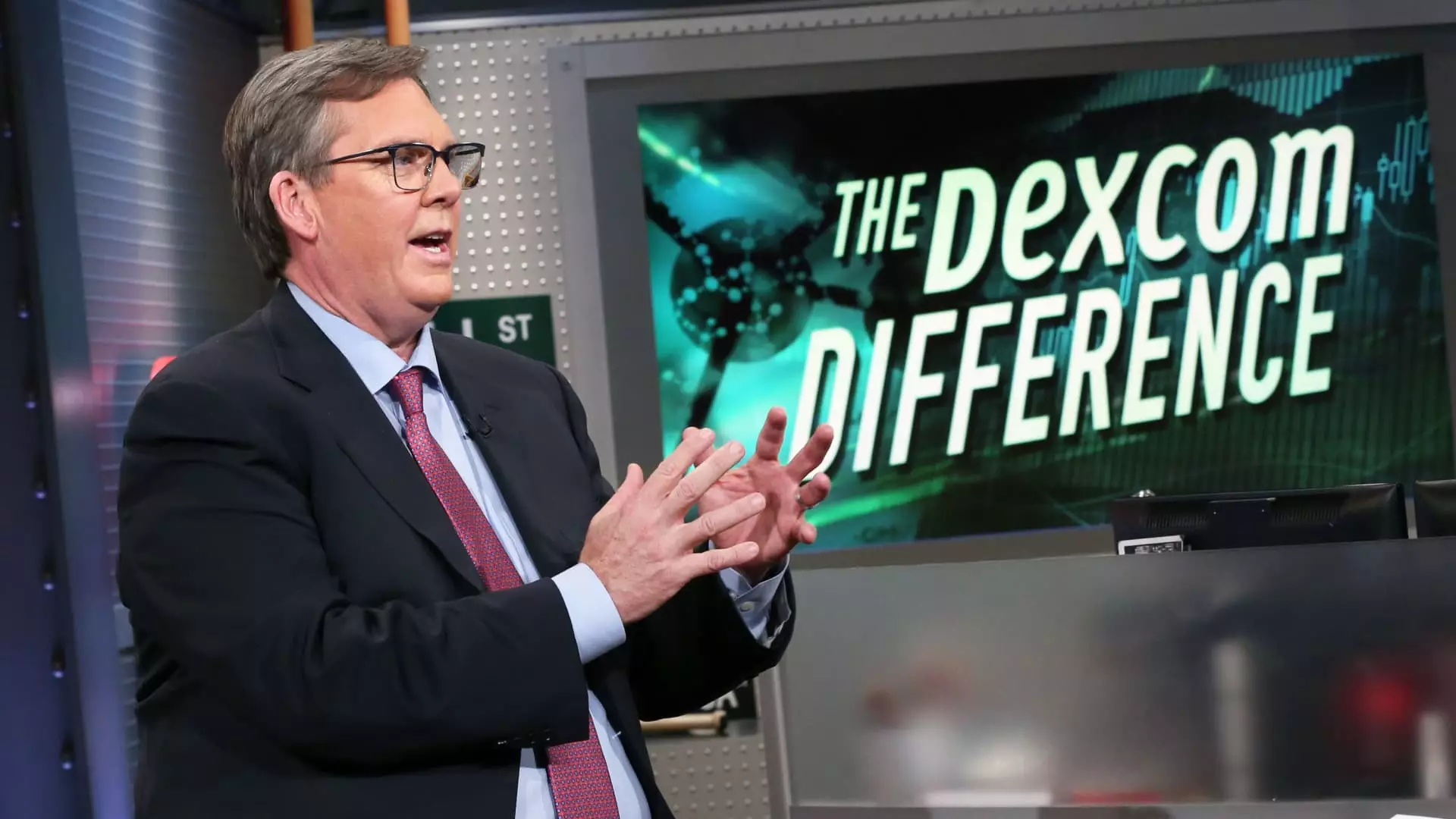Dexcom’s recent quarterly performance has been a mixed bag, prompting a notable decline in its stock price. Following the release of its third-quarter results on Thursday, shares plummeted by 9% in after-hours trading. Although the company exceeded analysts’ earnings expectations—with adjusted earnings per share coming in at 45 cents against the anticipated 43 cents—the reality of a year-over-year decrease in U.S. revenue put a damper on investor sentiment. Specifically, while total revenue for the quarter reached $994 million, just surpassing the $990 million forecast, U.S. revenue experienced a concerning 2% decline compared to $713.6 million from the previous year.
Despite an overall revenue increase of 2% from $975 million in the previous year’s quarter, the drop in U.S. revenues raises questions about Dexcom’s future growth prospects. This decline is particularly troubling as it reflects a contracting market presence in a highly competitive environment for diabetes management products. Although the company has maintained its fiscal guidance with expectations of $4 billion to $4.05 billion in revenue for the year, there’s a shadow cast by previously lowered forecasts which ranged from $4.20 billion to $4.35 billion. Such revisions suggest underlying challenges in market penetration and customer acquisition that cannot be overlooked.
CEO Kevin Sayer highlighted significant operational challenges driving the revenue slump, including a major restructuring of the sales team and an unanticipated reduction in new customer acquisition. The company has acknowledged that revenue per user is not meeting expectations, indicating potential pricing strategies or market saturation issues that could hinder growth. In light of these realities, Dexcom must recalibrate its strategies to enhance customer engagement and loyalty, as well as respond to the digital health marketplace’s evolution.
On a more positive note, Dexcom has made strides in expanding its product line, evidenced by the launch of its first over-the-counter product, Stelo. This move aims to target adults who do not require insulin while keeping the brand’s focus on continuous glucose monitoring technology. Stelo’s introduction reflects a strategic pivot toward increasing accessibility to GLM tools—something that could potentially stimulate user acquisition. However, the impact of this innovation will need to be closely monitored to determine if it can successfully reverse the current downward trend in U.S. revenue.
The forthcoming retirement of Teri Lawver, Dexcom’s chief commercial officer, at the year’s end adds another layer of complexity to the company’s trajectory. With Sayer stepping in to oversee the commercial division during this transitional period, it is crucial for Dexcom to maintain stability and continue its momentum amidst leadership shifts. The strategic decisions made in the coming months will be critical in replacing Lawver and guiding the company through a pivotal phase in its growth narrative.
Dexcom’s third-quarter results illustrate a company at a crossroads. While the earnings report shows promise in some areas, the concerning dip in U.S. revenue, combined with operational challenges, poses significant hurdles. As Dexcom seeks to solidify its market position, the success of its innovations and strategic adjustments will be central to overcoming its current obstacles.

